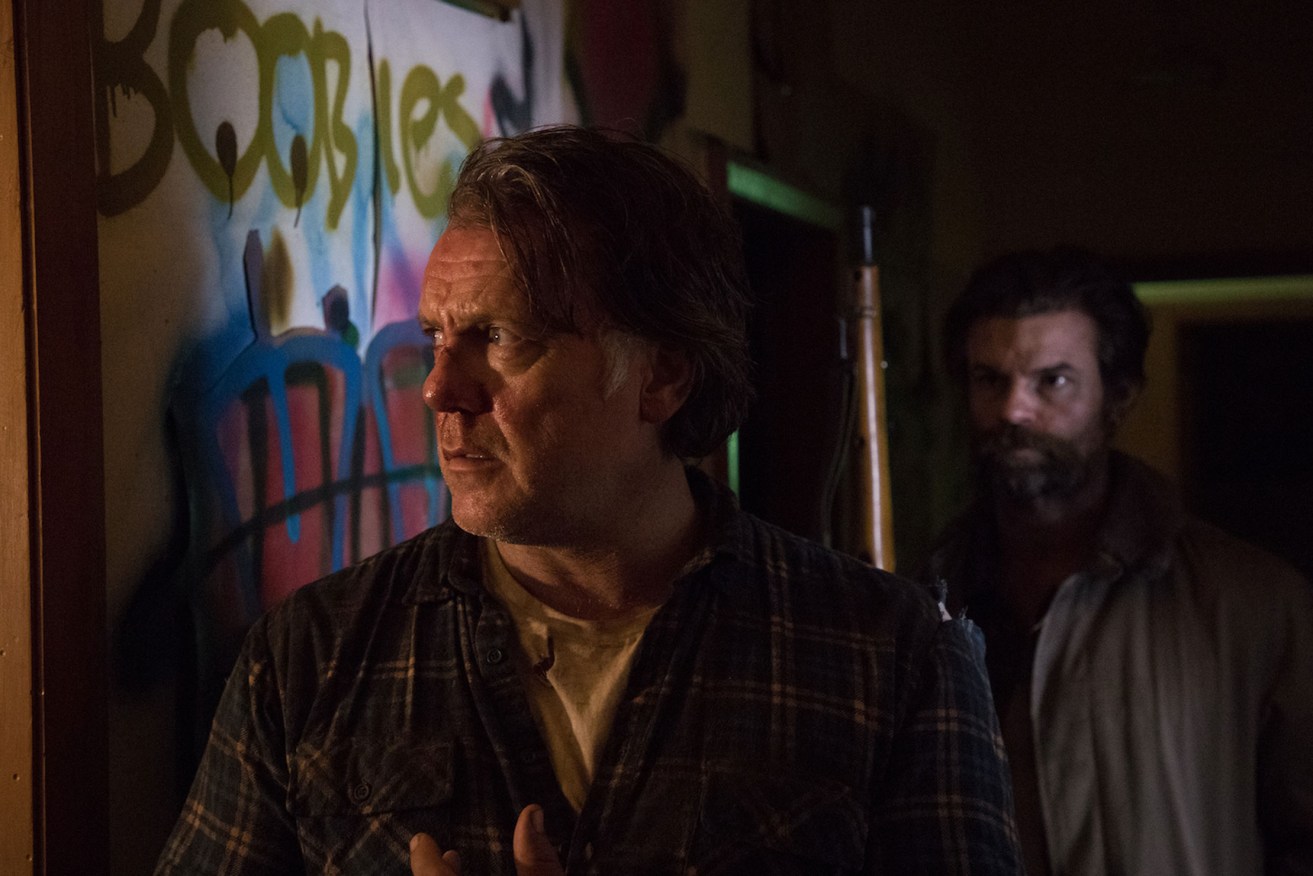Film review: Coming Home in the Dark
This film does for the rolling hills and river hideaways of New Zealand what Wolf Creek did for the red-dirt splendour of outback South Australia: namely, provide an excellent backdrop for scenes of panic, terror and fear.


Erik Thomson and Daniel Gillies in 'Coming Home in the Dark'. Photo: GoldFish Creative
Billed as a thriller, Coming Home in the Dark sits more correctly in the horror category, as we quickly find out. The opening is a happy family set-up too good to be true, often the starting point when something bad is about to happen. You know the trope; kids jumping happily into waterholes, or toasting marshmellows by a flickering fire. All you have to do is wait.
Here, Hoaggie (Adelaide actor Erik Thomson) and his wife Jill (New Zealand’s Miriama McDowell) are driving along New Zealand’s coastline while their teenage sons, Maika and Jordon, squabble amicably in the back seat. They are heading for a picnic spot so remote they have to hike in.
Unease turns to alarm when two men turn up: the clearly psychopathic Mandrake (Daniel Gillies) and his almost mute sidekick Tubs (Matthias Luafutu). Mandrake toys with the family for a while – when you look back, this will be the moment when you wish you’d done something, he tells them as a group in a campervan wave and they wave back. Inevitably, blood is spilled.
At this point some of the film’s problematic unevenness starts to emerge. Jill first appears to be dead but then isn’t, while Hoaggie’s emotional state is unconvincing, to say the least. And were the car doors locked or not, and if not, why not test them first when a police car was nearby?
A cat and mouse game ensues, the sort of determined horror built on flashes of hope that are quickly snatched away. Overlaying this, and apparently by coincidence, emerges a secondary story that contributes to the mad menace of it all and involves Mandrake and Tubs having been at the same boys’ home where Hoaggie once taught.
As an attempt to meaningfully explore the appalling conditions in which New Zealand children were once kept in such homes, and the lifelong damage this did to their mental health, it is laughably unconvincing. Really? You were there too? And you did nothing?
It’s dark, nasty stuff but by now we have come to realise that whatever happens, help isn’t coming. Best to stop worrying and let it unfold.




